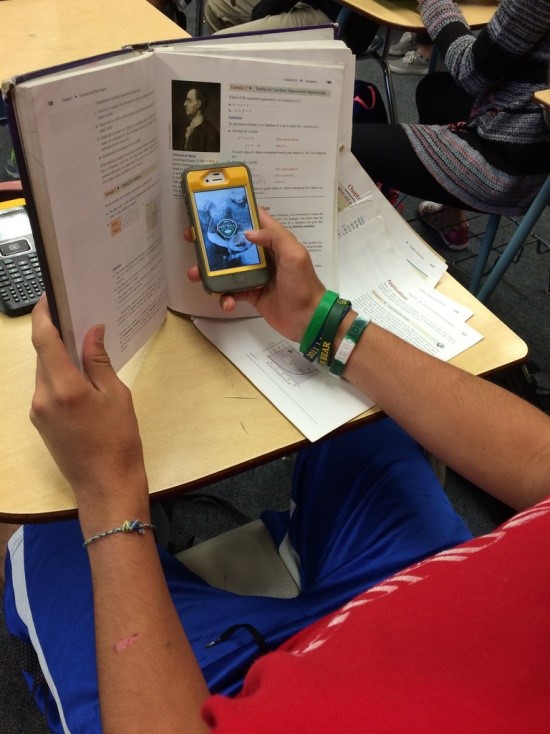Aug 28, 2017

I could sense around me that I was losing my learners. It was during an early experience of me training them to use software to help with language learning. But these learners had very different levels of experience of using software and while I was helping some who struggled to stay alongside, others already experienced were drifting into different worlds drawing them online. As a teaching staff, we eventually arrived at an approach to accommodate the full spectrum of learners and this worked well. Yet as trainers, we all face the issue of enabling all of our learners to learn, not just those in one part of the spectrum of abilities or experience within a class; and as well as this spectrum, other spectra will exist, such as the ability of non-‘mother tongue’ speakers in the language of instruction. How do we handle these and can digital really help?
Maybe the best known aspect of digital learning is that of the flipped classroom, using digital to deliver content out-of-class and so enabling learners to engage more fully with it in class. Having a digital aspect means that learners who are less experienced can take more time to learn in their own time, while those with more make do with less. It can also accommodate those with different ‘mother tongue’ languages, using subtitles for example. The VARK model sees learning as including Visual, Auditory, Read-write and Kinaesthetic approaches to learning and digital can also accommodate all of these; a read-write approach has dominated digital historically but these other approaches can be provided for too – video and podcast enable visual and auditory approaches, and e-learning authoring software can for kinaesthetic learning to some extent. Providing variety for learners however is not the sole criterion in connecting specific media with certain course content. But that is a topic for another time.
One other helpful aspect of digital for learners is so familiar that it can easily be overlooked – hypertext. We come across it as the (often underlined and in blue) computer text that links to other information by clicking on it. One challenge in classrooms when introducing a topic is deciding how much we can assume learners already know around a topic. It is likely that for some, they do not know as much as we thought and we leave it to them to catch up later, while others know more and so must listen patiently to hearing it again. Hypertext helps address this; if introductory content is written using hypertext, then learners in a flipped classroom can choose to read exactly what they need in order to better know the topic.
However hypertext also helps in accommodating how different learners learn. Linear learners prefer to learn in sequential steps, with each step following logically on from the former; classroom learning with its fixed space-time dimension easily enables this. Non-linear (or global) learners by contrast, tend not to ‘get it’ until they see the whole structure and how its parts work together. Classroom learning can accommodate this but hypertext helps. One creative example I have come across (and partly done myself) is where content was presented through a website based on the theme of a mansion. Learners clicked on different ‘rooms’ (each representing a page on the website) and experienced certain content within each ‘room’, thus enabling a more non-linear way of learning. Admittedly this is technically more advanced and only works with certain content, but even basic hypertext can help make learning a less linear experience.
As well as advantages, there are clearly also challenges with a flipped approach. One challenge is how content can still be presented interactively when taken out of a classroom context. One common way is through discussion forums, which I will consider in a later blog posting. Another is the online quiz, which helps learners know they have assimilated key knowledge, but only by interacting with a computer rather than with colleagues. Ways I have encountered to make it more interactive include following up quiz results with tutorial content or having learners create quizzes and answers for each other. Another challenge is how learning is structured. Four questions I focus on in designing learning are akin to: “Why do learners need to know this?” “What do they then need to know?” “How can they know it works?” and “What can it become for them?” In classroom contexts this works well but since the space-time dimension of learning is significantly disrupted by digital, creativity is needed in order to keep a similar structure of learning. Solutions will vary depending on the learning situation.
How can these digital aspects best enable better learning for your learners?
*****
Read more blog posts by Peter Tate:
Peter Tate is self-employed as an adult education consultant for Brainy Training Solutions and recently finished designing Financial Management training for the WaterAid charity. Previously he worked as a training designer for Hope Consultants, a UK-based international development organisation, where he created Dialogue Education-type training from existing video monologue content, and then prepared it for digital format. This was alongside study for a Masters in Digital Education with Edinburgh University, learning how to implement a Dialogue Education approach in online environments.



